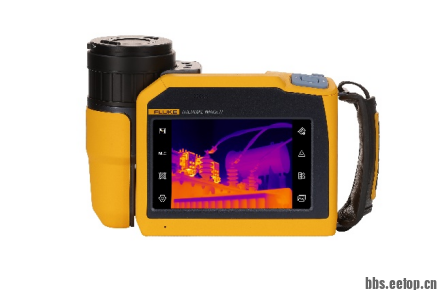日志
Preface 1
热度 3| |||
Quick Look at All the Chapters
"Chapter 1, “Getting Started,”
introduces you to the SKILL programming language. This chapter shows you how to enter simple SKILL expressions and understand the system output. It introduces the list, a data structure that is central to SKILL. It presents basic file input/output functions and shows several ways to control program flow. It introduces the basic steps to creating your own SKILL procedures."
"第一章“入门指南”介绍了 SKILL 编程语言,向您展示如何输入简单的 SKILL 表达式并理解系统输出。它介绍了列表这种对于 SKILL 处理很重要的数据结构,展示了基本的文件输入/输出函数,并展示了几种控制程序流程的方法。它介绍了创建自己的 SKILL 程序的基本步骤。"
getting started 入门
programming language 编程语言
SKILL expressions SKILL 表达式
the basic steps 基本步骤
SKILL procedures SKILL 程序
"Chapter 2, “Language Characteristics,”
explains the basic structure and syntax of the SKILL language. It presents details of data structures introduced in chapter one, uniting basic data information in one place."
"第二章“语言特性”
解释了 SKILL 语言的基本结构和语法。它详细介绍了第一章中引入的数据结构,将基本数据信息汇集到一个地方。"
characteristic /ˌkærəktəˈrɪstɪk/ character 个性 + istic 的
(1)n 特征;特点;品质 the two groups of children have quite different characteristics.
(2)adj 典型的;独特的;特有的 heared my friend's characteristic laugh.
explain /ɪkˈspleɪn/ v 解释;说明;阐明
(1)It was difficult to explain the problem to beginners.
syntax /ˈsɪntæks/ n 句法;句法规则;语构
(1)The difficulties of English syntax.
"Chapter 3, “Creating Functions in SKILL,”
fills you in on more of the details about constructs for defining a function, identifying data types for function arguments, defining parameters, and defining local and global variables."
"第三章“在 SKILL 中创建函数”
填补了更多有关定义函数结构、确定函数参数数据类型、定义参数以及定义本地和全局变量的细节信息。"
identify /aɪˈdentɪfaɪ/ vt 识别;确认;发现;鉴定;
(1)she was able to identify her attacker.
(2)First of all we mast identify the problem areas.
"Chapter 4, “Data Structures,”
presents an in-depth view of data structures, such as symbols, property lists, defstructs, arrays, strings, and association tables. It describes what they are and how to use them."
"第四章“数据结构”
深入介绍了诸如符号、属性列表、定义结构、数组、字符串和关联表等数据结构的知识。它描述了它们是什么以及如何使用它们。"
association /əˌsəʊsiˈeɪʃn/ n 关联;协会;联系;联盟;联合;
(1)the football Association 协会
(2)She became famous through her association with the group of poets 交往
(3)The cat soon made the association between human beings and food. 联系
"Chapter 5, “Arithmetic and Logical Expressions,”
presents operators and predefined SKILL arithmetic and logical functions. It shows you how to create expressions using the operators. It explains how SKILL performs a sequence of function evaluations and deals with function overloading."
"第五章“算术和逻辑表达式”
介绍了运算符和预定义的 SKILL 算术和逻辑函数。它展示了如何使用运算符创建表达式。解释了 SKILL 如何执行一系列的函数计算,并处理函数重载。"
deal /diːl/ v 处理;经营,交易;论述, dealt, dealt
(1)Whose turn is it to deal ? 发牌
(2)you deal with it. 处理
deal sb/sth a blow
deal a blow to sb/sth 令...震惊
(1)Her sudden death dealt a blow to the whole country.
deal with sb/sth 对付;应付;对待
"Chapter 6,“Control Structures,”
introduces more branching, iteration, and selection functions. It demonstrates how to declare local variables using prog. It details how to group statements where only a single statement would otherwise be allowed."
"第六章“控制结构”介绍了更多的分支、迭代和选择函数。它演示了如何使用 prog 声明本地变量,并详细说明如何在只允许单个语句的情况下对语句进行分组。"
structure /ˈstrʌktʃə(r)/ n 结构;构造;体系;
(1)The structure of the building
(2)The grammatical structures of a language.
branch /brɑːntʃ/ n 分支;分支;分行;分支机构;树枝;
(1)The bank has branches all over the country. 分行
(2)I don't think that branch will hold your weight. 树枝
(3)root and branch 完全彻底
iteration /ˌɪtəˈreɪʃn/ n 迭代
demonstrate /ˈdemənstreɪt/ v 证明;演示;示范;
declare /dɪˈkleə(r)/ v 声明;宣布;申报(收益);申报
detail /ˈdiːteɪl/ v 详细说明;派遣;详细列举;
statement /ˈsteɪtmənt/ n 语句,陈述。
otherwise /ˈʌðəwaɪz/ adv 否则;另;不然;
"Chapter 7,“I/O and File Handling,”
describes the SKILL file system interface. It presents functions that interact with ports, create formatted or unformatted output, scan input strings or characters, and manage files and directories."
"第七章“输入输出和文件处理”
描述了 SKILL 文件系统接口。它介绍了与端口进行交互的函数,创建格式化或非格式化输出、扫描输入字符串或字符以及管理文件和目录的函数。"
handle /ˈhændl/ v 处理,应付
(1)She's very good at handling her work.
(2)We can handle up to 500 calls an hour at our new office.
interface /ˈɪntəfeɪs/ n 接口;接口程序;连接电路;
(1)The user interface 用户界面
(2)The interface between computer and printer.
interact /ˌɪntərˈækt/ vi 互动;相互作用;交流;合作;相互影响;沟通
(1)interact with 与…相互作用
The youths started to interact with the older members.
formate /ˈfɔːmæt/ n 格式;设计;计划;(出版物的)版式,开本;总体安排
vt 格式化;安排…的版式 formate
scan /skæn/ v 扫描(图像或文件等);浏览;审视;察看;翻阅;细看;端详
Chapter 8, “Advanced List Operations,”
presents an in-depth view of lists, including a conceptual overview.
It discusses more advanced SKILL list functions and how to use them.
As you become more familiar with SKILL,
you will probably be using and building lists more frequently.
"第八章“高级列表操作”
对列表进行了深入的介绍,包括概念概览。它讨论了更高级的 SKILL 列表函数以及如何使用它们。随着您对 SKILL 的熟悉程度越来越高,您可能会更频繁地使用和构建列表。"
advanced /ədˈvɑːnst/ adj 先进的;高级的;(发展)晚期的,后期的;高等的
(1)advanced technology 先进技术
(2)advanced list operations高级列表操作
an in-depth view
conceptual /kənˈseptʃuəl/ adj. 概念(上)的;观念(上)的
(1)a conceptual model 概念模式
overview /ˈəʊvəvjuː/ n 概述;概况;纵览;概论
discusse /dɪˈskʌs/ vt.讨论;论述;谈论;商量;详述
familiar /fəˈmɪliə(r)/ adj. 熟悉的;熟悉;
frequently /ˈfriːkwəntli/ adv.经常;频繁地
frequent adj.频繁的;经常发生的
”Chapter 9, “Advanced Topics,” contains concepts of interest to advanced users. It discusses
SKILL architecture and implementation, evaluation, function objects, the lambda function
designator, differences in C and SKILL macros, error handling, talking to the SKILL top level,
and memory management (garbage collection). It also describes dynamic and lexical
scoping.“
"第九章“高级主题”包含对高级用户感兴趣的概念。它讨论了 SKILL 的架构和实现、评估、函数对象、lambda 函数指示符、C 和 SKILL 宏的区别、错误处理、与 SKILL 顶层通信以及内存管理(垃圾回收)。它还描述了动态和词法作用域的概念。"
Chapter 10, “Delivering Products,” describes contexts, which are binary representations of
the internal state of the interpreter. This chapter provides information the developer needs to
decide when it is better to use contexts as opposed to straight or encrypted SKILL code.
"第十章“产品交付”描述了上下文,这是解释器内部状态的二进制表示。本章提供了开发人员需要的信息来决定何时最好使用上下文,而不是直接或加密的 SKILL 代码。"
Chapter 11, “Writing Style,” shows ways to make your SKILL programs understandable,
reusable, extensible, efficient, and easy to maintain.
"第十一章“写作风格”展示了如何使您的 SKILL 程序易于理解、可重用、可扩展、高效并且易于维护。"
Chapter 12, “Optimizing SKILL,” shows you what to do if code is not running as fast as it
should. It presents the when, what, and how of optimizing code. It helps you focus your efforts
to improve your code.
"第十二章“优化 SKILL”展示了如果代码运行速度不如预期应该怎么办。它介绍了优化代码的时间、内容和方法,并帮助您专注于改进代码的方向。"
Chapter 13, “About SKILL++ and SKILL,” introduces the Cadence-supplied Scheme called
SKILL++, which is the second generation extension language for the CAD tools from
Cadence.
"第十三章“关于 SKILL++ 和 SKILL”介绍了 Cadence 提供的 Scheme 语言扩展,称为 SKILL++,它是 Cadence CAD 工具的第二代扩展语言。同时也介绍了原始的 SKILL 语言。"
Chapter 14, “Using SKILL++,” focuses in detail on the key areas in which SKILL++ semantics
differ from SKILL semantics.
"第十四章“使用 SKILL++”重点详细介绍了 SKILL++ 语法和 SKILL 语法不同的关键方面。"
Chapter 15, “Using SKILL and SKILL++ Together,” discusses the pragmatics of developing
SKILL++ programs. It identifies several more factors to consider in creating applications
which involve tightly integrated SKILL and SKILL++ components, such as, selecting a
language, partitioning an application, cross calling between SKILL and SKILL++, and
debugging a SKILL++ program.
"第十五章“混合使用 SKILL 和 SKILL++”讨论了开发 SKILL++ 程序的实践问题。它确定了创建涉及密切集成的 SKILL 和 SKILL++ 组件的应用程序时需要考虑的几个因素,例如选择语言、应用程序分区、在 SKILL 和 SKILL++ 之间进行交叉调用以及调试 SKILL++ 程序等。"
Chapter 16, “SKILL++ Object System,” describes a system that allows for object-oriented
interfaces based on classes and generic functions composed of methods specialized on
those classes. A class can inherit attributes and functionality from another class known as its
superclass. SKILL++ class hierarchies result from this single inheritance relationship.
"第十六章“SKILL++ 对象系统”介绍了一种基于类和泛型函数、由方法组成的面向对象接口系统。一个类可以从另一个称为其超类的类中继承属性和功能。SKILL++ 类层次结构源于这种单一继承关系。"
Chapter 17, “Programming Examples,” presents a variety of samples of SKILL code.
"第十七章“编程示例”介绍了各种 SKILL 代码示例。"
 /1
/1 


 eetop公众号
eetop公众号 创芯大讲堂
创芯大讲堂 创芯人才网
创芯人才网